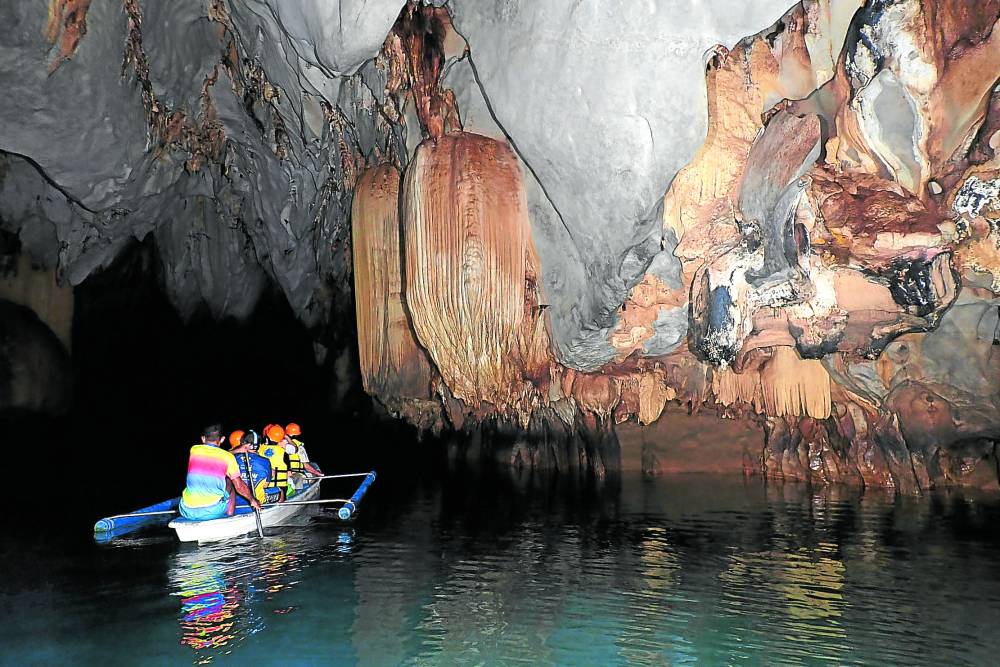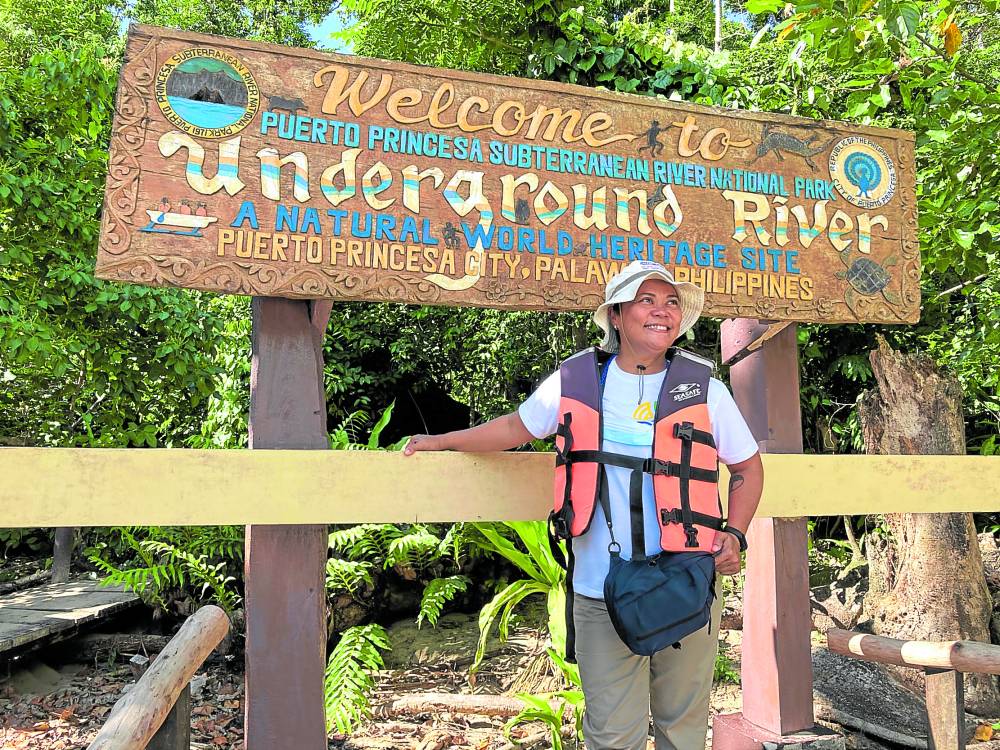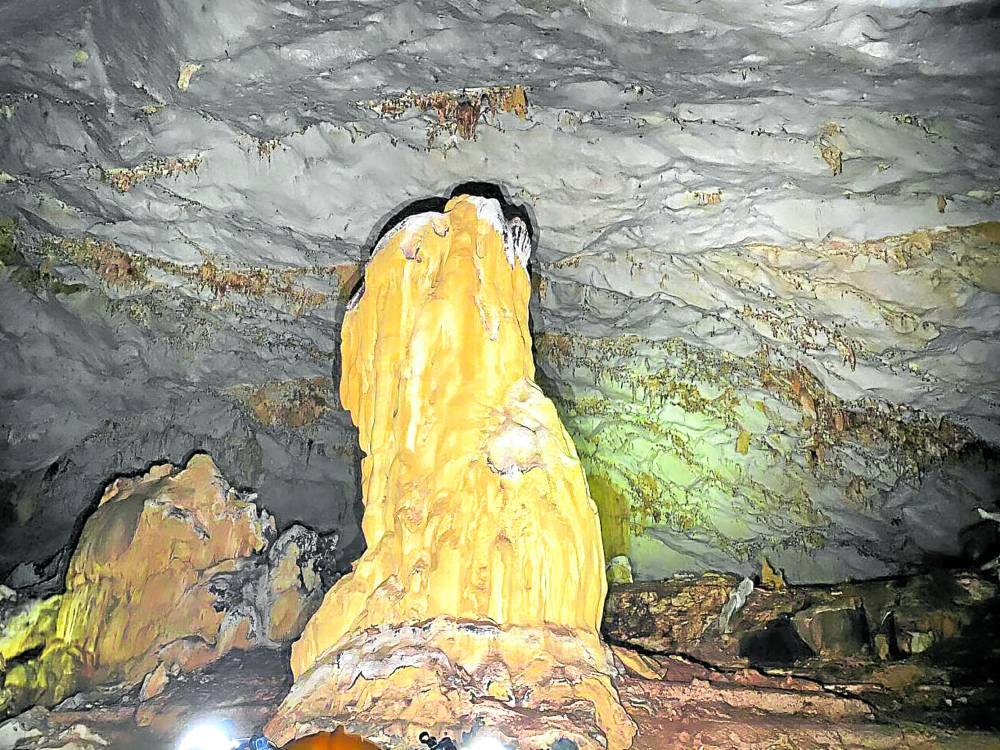
The Puerto Princesa Underground River in Palawan has been a famous, formidable natural wonder and tourism destination for a long time, since 3,901 hectares of the area were named the St. Paul Subterranean Park by Presidential Proclamation No. 835 in 1971.
The attention has not waned. In 1992, park management was transferred to the Puerto Princesa city government and its own Protected Area Management Board (PAMB), under the Department of Environment and Natural Resources.
On Nov. 16, 1999, PP No. 212 expanded the area to 22,202 ha, including the river’s catchment and neighboring important forests, deemed essential for biodiversity conservation. It was also renamed the Puerto Princesa Subterranean River National Park (PPSRNP).
On Dec. 4 of that same year, the United Nations Education, Scientific and Cultural Organization (Unesco) inscribed the park on its list of natural World Heritage Sites, based on “superlative natural phenomena or areas of exceptional natural beauty and aesthetic importance,” and for being home to “the most important and significant natural habitats for in-situ conservation of biological diversity.”
By 2003, it was a National Geological Monument; by 2011, the river was declared one of the New 7 Wonders of the World, after a campaign that saw Filipinos worldwide working for the honor. In 2012, the park was declared a Ramsar Site, based on the global Ramsar Convention on Wetlands of International Importance.
Spectacular
It doesn’t hurt that the river is, well, spectacular. Mind-boggling karst limestone formations surround an 8.2-kilometer stretch of brackish water that flows into the sea, covering a truly “mountain-to-sea” range of ecosystems.
It’s an otherworldly experience, as visitors on paddleboats are taken on 45-minute tours to view breathtaking stalactites and stalagmites, massive caverns and natural formations with names like the Candle and T-Rex. Tiny bats and swiftlets fly around as the guides shine powerful lights on the karst, adding to the drama. An excellent audio tour now encourages a more respectful, reverent silence; after all, the river is estimated to be between 15 and 20 million years old.
“Nakakawala ng pagod (The tiredness disappears), no matter how many times you see it,” says Beth Maclang, the feisty protected area superintendent of the PPSRNP for the last nine years. “My favorite part is the Cathedral”—she’s referring to a huge cavern with a high ceiling and what look like religious icons on the walls—”because it is still always amazing every time you see it.”

What few people realize, however, is that because of its expanded “influence,” as it were, the river, located on the northwestern end of Puerto Princesa City, is the flagship feature of an area that is home to four barangays and some 7,000 people. These barangays are Tagabinet, Cabayugan, Panggangan and Marufinas, which also include a large population of the indigenous Tagbanua tribe, living in three ancestral domains.
Sustainable tourism
The river actually started receiving visitors in the 1990s, but only about 50 people a day, since roads were rough and it was not yet properly marketed, Maclang reveals. By the time she joined the team in 2013, recruited from another environmental nongovernmental organization (NGO) by Puerto Princesa Mayor Lucilo Bayron, it was a thriving enterprise, and she was able to focus on community development and capacity building for local people’s organizations.
“It was our goal to strengthen them, especially financially,” she says. “No matter how good park management is, if there is no sense of ownership among the people, wala.”
The PPSRNP did get help from NGO partners who shared the same vision. Among these was the Pilipinas Shell Foundation Inc. (PSFI), whose executive director, Marvi Rebueno-Trudeau, launched the Tandikan program, named after the Palawan peacock pheasant that appears on the province’s seal.
“Tandikan” stands for Turismo at Negosyo Dulot ng Ingat Kalikasan, and is focused on the development of several community-based sustainable tourism (CBST) sites in communities in the park.
“We started in 2015, and we realized that even if we focused on tourism, we had to consider the needs of the communities, so all projects were integrated,” says Rebueno-Trudeau. “That’s why we also have upscaling of organic farming, nutrition and skills training for the people.”
As a result, visitors to the Underground River also had the option to go caving in the Hundred Caves in Tagabenit, paddle through mangroves in Sabang, or go snorkeling in Isla Filomena, for example. PSFI provided the barangays with basic infrastructure and supplies, safety training, and equipment.
Before the pandemic, the river was attracting as many as 1,200 people a day, wisely controlled by park management to minimize impact, despite a total capacity of 2,500. There were 304 employees, including a park biologist, marine biologist and cave management specialist trained by Italian scientists from the LaVenta Foundation. Because of the P500 entrance fee, “we were self-sustaining,” recounts Maclang. “We would allocate for the next year, including salaries. We would give P1 million each to the four barangays, and P500,000 to each ancestral domain.” By 2019, the park had some P100 million in savings.

Counting bats
And then, COVID-19 happened. “Closed! The airport was closed, so we had zero tourism,” recalls Maclang.
To attract local tourists, the park lowered its entrance fee to P100, but the staff still had to be streamlined. In consultation with the PAMB, Maclang opted to put any infrastructure building on hold and used the park’s savings for salaries, as research and maintenance continued—“We still had to count our bats!” Some 64 staff members were deployed to COVID-related activities, but remained on the park’s payroll.
Maclang worried that protected areas would be in danger when people went hungry, and indeed, in 2020, one of her park rangers was shot by poachers caught cutting trees in a protected forest. The ranger survived, and was reassigned to new work—as a lifeguard at the Sabang pier, Cabayugan’s busiest area, where visitors book tours and boats.
Community members who went back to planting rice and vegetables and fishing for a living got a boost from the Tandikan project in 2020, when PSFI provided seeds and tools—then proceeded to buy all their produce and catch for distribution to front-liners for the next few months.
Alternative sources
Whatever was left from savings after two years, meanwhile, had to be used again when many CBST sites were pummeled by Typhoon “Odette.” The local boatmen’s organization, for example, lost many of their vessels.
Some of the sites, however, already had people’s organizations that had successfully established alternative income sources, like a community store for the Hundred Caves site in Tagabinet, and a local bakery in Isla Filomena. Tribespeople were allowed to harvest forest products like honey for their own subsistence.
The Underground River reopened on Jan. 2 this year, and when we visited in June, the tourists were back. Maclang is breathing a sigh of relief that income is returning just as the savings had run out, but vows that park management must learn its lesson and be more prepared for such calamities in the future.
“We have to manage our funds well so that we are prepared for emergencies, and we do not need to depend on our forests.” Maclang is also pushing for security of tenure for staff members of the PPSRNP, so that the sustainable management of this national treasure is not vulnerable to the winds of political change.
The pride in Maclang’s face is unmistakable when we paddle through the river. “I feel like crying when people say how beautiful it is, because I also remember all the heartaches and sacrifices,” says this avowed environmental activist, wife and mother. “But when we think of all the people who depend on us, then we know we must do it.”
Visit the Puerto Princesa Subterranean River National Park & World Heritage Site on Facebook for information.








































